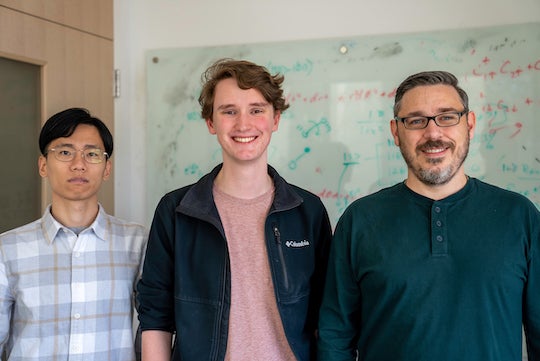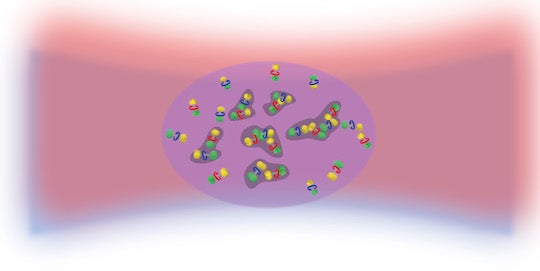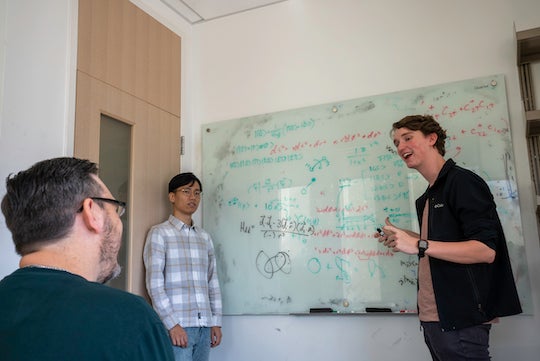Quantum technologies bring the promise of faster computing, enhanced drug development and new sensing applications. However, quantum behaviors are difficult to study experimentally since most systems can only sustain quantum effects for a short time.

"The reason why quantum physics' mysterious features tend to vanish so quickly is a process called decoherence," said Kaden Hazzard, associate professor of physics and astronomy at Rice University and a corresponding author on a study published in Nature Physics. "It occurs when a quantum system interacts with its surroundings and this changes the physics. The bigger the system and the larger the couplings to the surroundings, the more the system will behave in a classical, non-quantum fashion ⎯ and you lose your ability to investigate things at the quantum level."
Rice scientists and collaborators were able to prolong quantum behavior in an experimental system nearly 30-fold by using ultracold temperatures and laser wavelengths to generate a "magic trap" that helped delay the onset of decoherence. The study is the first experimental demonstration of its kind and provides a new arena to study quantum interactions.
Simon Cornish's group in the Department of Physics at Durham University in the United Kingdom collaborated with Hazzard and his group at Rice to cool molecules to a billion times below room temperature to create a unique quantum mechanical system. They then set those molecules to rotate quantum mechanically ⎯ a situation analogous to molecules aligning and rotating both clockwise and counterclockwise at the same time ⎯ using microwave radiation.
"When you cool atoms or molecules to these extremely low temperatures, you can control them with light," Cornish said. "You can actually use lasers to push on the atoms and make them go where you want them to go. You can also use lasers to trap or hold them, and that gives you a level of precision and control that you wouldn't have normally."

Generally, the coherence of this rotating behavior in the ultracold molecules decays over a very short amount of time. Before now, the longest recorded quantum state of rotating molecules measured in at 1/20 of a second. Cornish's group, however, was inspired by theoretical work by Temple University's Svetlana Kotochigova that suggested a certain "magic" wavelength of light could preserve quantum coherence for a longer period of time.
"Quantum behavior becomes more prominent the colder the system is and brings the quantum behavior to larger length scales," said Jonathan Stepp, a graduate student in Hazzard's group. "And having lasers at the right wavelength can 'trap' the molecules, so they can rotate in lockstep, which preserves the quantum coherence for a longer time."
When the group applied this theory in the laboratory as a new experimental technique, they created a "magic trap" which kept the molecules rotating quantum mechanically for a significantly longer time. While Hazzard thought this "magic" laser trap might increase quantum coherence by two- or three-fold, he was shocked to see it kept the molecules uniformly rotating for nearly 1.5 seconds ⎯ a 30-fold increase.
"While I'm not surprised it worked, I'm definitely surprised at how well it worked," Hazzard said.
Zewen Zhang, another graduate student in Hazzard's group, said that improved coherence times will allow scientists to study fundamental questions about interacting quantum matter.
"As coherence times become longer, new effects are unveiled," Zhang said. "We can begin exploring by comparing the experimental measurements to our calculations. Improved coherence is also a step to using ultracold molecules as a platform for various quantum technologies."

"Even though quantum behavior sounds like a very exotic thing, it's actually responsible for things we see every day, from how metals conduct electricity to how fusion is produced by the sun," added Hazzard, who is a member of the Rice Quantum Initiative and the Smalley-Curl Institute. "If you want to make new materials, new sensors or other quantum technologies, you need to understand what is happening at the quantum level, and this research is a step toward achieving new insights."
The research was supported by the U.K. Engineering and Physical Sciences Research Council (EP/P01058X/1, EP/P008275/1, EP/W00299X/1), U.K. Research and Innovation Frontier Research Grant (EP/X023354/1), the Royal Society, Durham University, the Robert A. Welch Foundation (C-1872), the National Science Foundation (1848304, 1908634), the Office of Naval Research (N00014-20-1-2695), the W.F. Keck Foundation (995764) and the U.S. Air Force Office of Scientific Research (FA9550-21-1-0153, FA955019-1-0272).
- Peer-reviewed paper:
-
Second-scale rotational coherence and dipolar interactions in a gas of ultracold polar molecules | Nature Physics | DOI: 10.1038/s41567-023-02328-5
Authors: Philip D. Gregory, Luke M. Fernley, Albert Li Tao, Sarah Bromley, Jonathan Stepp, Zewen Zhang, Svetlana Kotochigova, Kaden Hazzard and Simon Cornish
- Image downloads:
-
https://news-network.rice.edu/news/files/2024/01/231206_Nature-Physics-Paper-with-Jonathan-Stepp-Zewen-Zhang-and-Kaden-Hazzard_gustavo-22-6b301538f3dd14c3.jpg CAPTION: Zewen Zhang (from left), Jonathan Stepp and Kaden Hazzard (Photo by Gustavo Raskosky/Rice University)
https://news-network.rice.edu/news/files/2024/01/231206_Nature-Physics-Paper-with-Jonathan-Stepp-Zewen-Zhang-and-Kaden-Hazzard_gustavo-15-236603fd4fad45e8.jpg CAPTION: Kaden Hazzard (from left), Zewen Zhang and Jonathan Stepp (Photo by Gustavo Raskosky/Rice University)
https://news-network.rice.edu/news/files/2024/01/ColdMolecule-99f253ff4c054213.jpg CAPTION: An artist's conception of molecules rotating in a quantum superposition in a trap, with clockwise (red) and counterclockwise (blue) rotation rates varying in space. (Image courtesy of the Hazzard Group/Rice University)






